21 Great UNESCO World Heritage Sites in England + MAP!
There are an amazing amount of UNESCO World Heritage Sites in England. I bet if you ask the average English person though, they’ll have been to no more than five. Make it your mission to see them all!
If you wanted to travel England by UNESCO then you’d get a good look at the key places to visit in England, as well as some of the smaller villages and countryside locations that make up our wonderful country.
UNESCO status is awarded to the most beautiful places around the world as World Heritage Sites, and there are 21 in England.

A World Heritage Site doesn’t have to be a building.
It can be anything that depicts a culture, or anything natural. These sites are considered to have a universal value which not only enriches the minds of the current generation, but it will give the future generations a reason to look back and be proud of their ancestors.
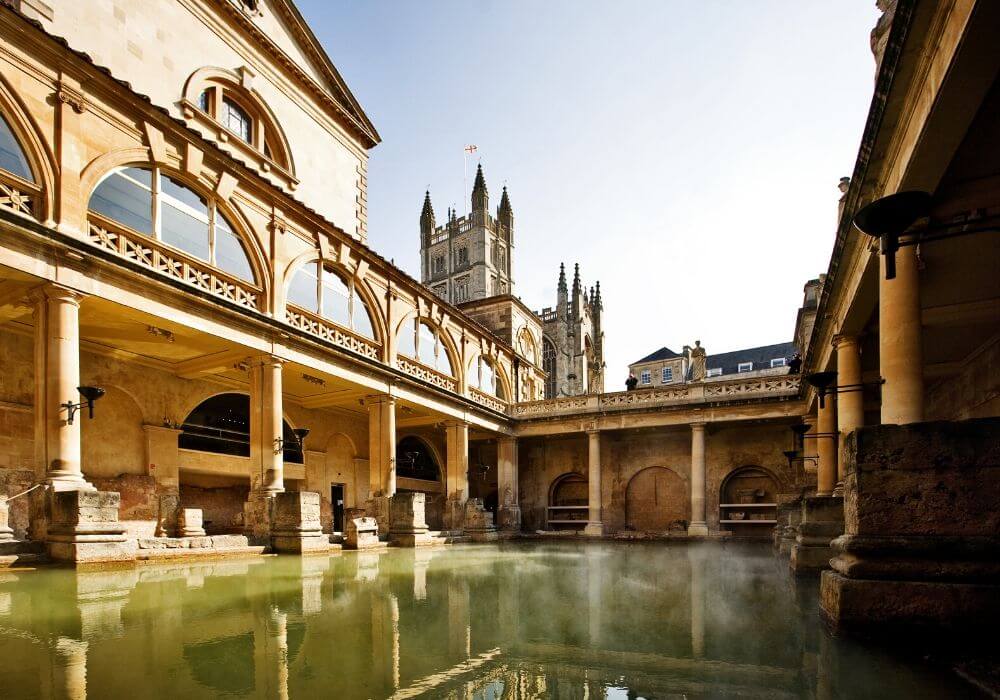
England is a beautiful blend of architectural and scenic beauty. It has a rich cultural heritage which reflects in the architecture all over the country. The majority of England’s UNESCO World Heritage Sites are cultural, and portray the best of the country.
Read on for your guide to the top UNESCO World Heritage Sites of England.
Best UNESCO World Heritage Sites in England
How many UNESCO World Heritage Sites are there in England?
There are 21 different UNESCO sites in England, 1 of them is a natural UNESCO site (the Jurassic Coast) and the rest are manmade. Read on to find out more about each one…
- Best UNESCO World Heritage Sites in England
- 1. Tower of London, London
- England UNESCO World Heritage Sites Map
- 2. Windsor Castle, Berkshire
- 3. Stonehenge and Avebury, Wiltshire
- 4. The City of Bath, Somerset
- 5. Palace of Westminster and Westminster Abbey, London
- 6. St. Paul’s Cathedral, London
- 7. Studley Royal Park and Ruins of Fountains Abbey, North Yorkshire
- 8. Blenheim Palace, Oxford
- 9. The Jurassic Coast, Dorset
- 10. Ironbridge Gorge, Shropshire
- 11. Derwent Valley Mills, Derbyshire
- 12. Saltaire, West Yorkshire
- 14. Maritime Greenwich, London
- 14. Canterbury Cathedral, St Augustine's Abbey, and St Martin's Church, Kent
- 15. Cornwall and West Devon Mining Landscape
- 16. Durham Castle and Cathedral, County Durham
- 17. Hadrian's Wall, Northumberland
- 18. Jodrell Bank Observatory, Macclesfield, Greater Manchester
- 19. Liverpool – Maritime Mercantile City
- 20. Royal Botanic Gardens Kew, Greater London
- 21. Lake District, Cumbria
- England's UNESCO World Heritage Sites
- All the UNESCO World Heritage Sites in England
1. Tower of London, London
The Tower of London is almost 1,000 years old and so has significant history attached to it. It’s a castle and a fortress and is located in Central London, just on the river banks of Tower Hill.
The Tower of London was used as a royal residence, barracks, museum, armoury and prison. Now it is the home to the precious Crown Jewels of England.
Over the years many famous and infamous prisoners were prisoned here.
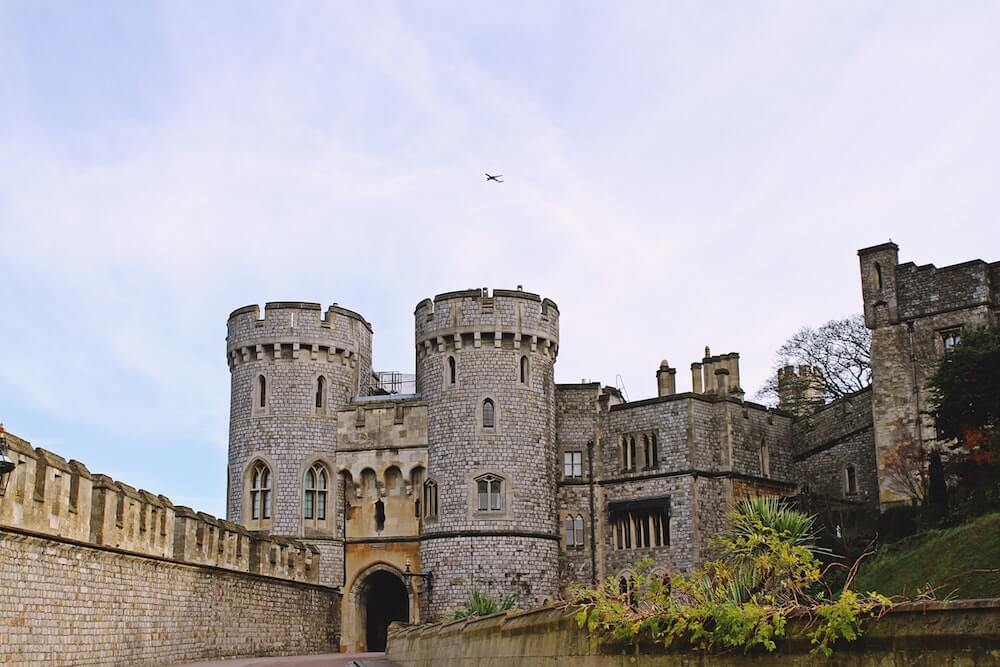
Being one of England’s iconic structures, this place has great value to the history and culture of England. Back in 1066 when William the Conquerer built this tower, he strategically sited it along the River Thames to protect the city of London. But now River Thames just serves to add the perfect setting to the splendour of the tower.
People from all over the world visit the Tower of London – it’s one of the best tourist attractions in London, and England. One of the best ways to see it is to opt for a cruise on the River Thames to take in the gorgeous views of the majestic tower.
Thanks to its rich history, entertaining beefeaters, resident crows, and spooky torture chamber stories, the Tower of London is one of the most famous UNESCO World Heritage Sites in England.
Save money, time and hassle at the gate!
England UNESCO World Heritage Sites Map
Here’s an easy to read map of the World Heritage Sites in England, so you can see where they are at a glance.
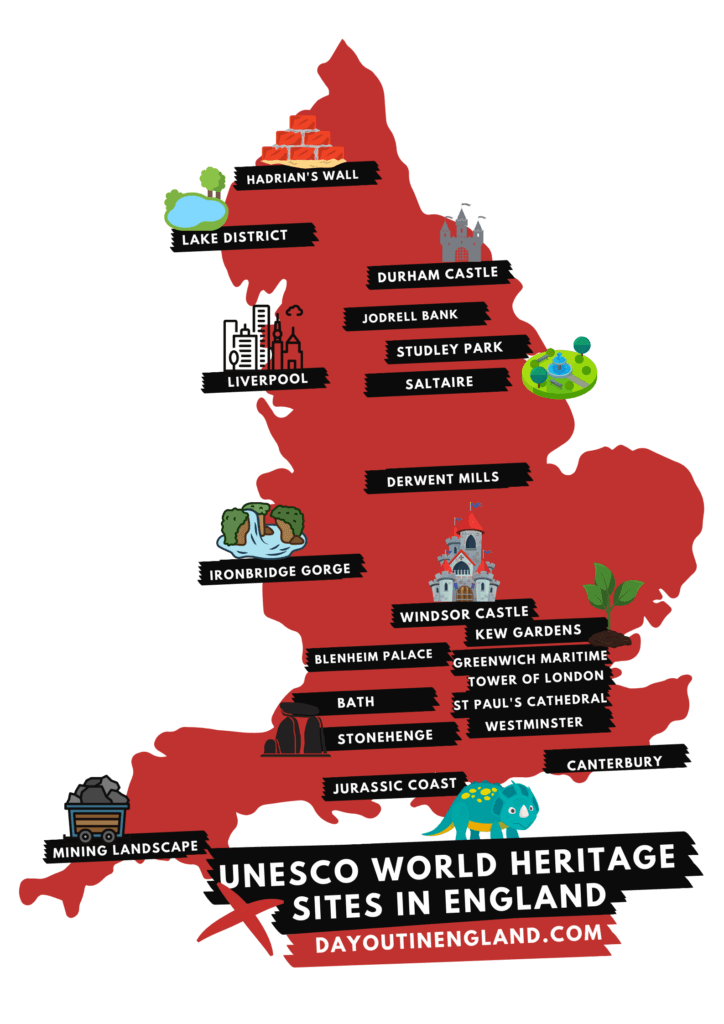
2. Windsor Castle, Berkshire
Windsor Castle is another famous heritage site declared by UNESCO. It is one of the oldest castles in the world and is the official residence of Her Majesty Queen Elizabeth II.
Windsor Castle stands tall in the north-eastern edge of the district of Windsor in the county of Berkshire. It’s a stunning peak on the Windsor skyline when you look across, and you can’t miss it as you drive around the town.
Check the Windsor Castle website and make sure to arrive for the Changing of the Guard, it’s quite the spectacle!

Price Harry and Meghan Markle married in St George’s Chapel at Windsor Castle, for all the world to see. You can stand on the very steps where they did, and go in the chapel too. Imagine standing at the front with all those people watching, like they did!
Windsor Castle has private apartments for the royal family and visitors – unfortunately their visitors, not you. As a member of the public visiting the castle you can see the Grand Reception room, St. George’s Hall, and the Waterloo Chamber.
One of the highlights of visiting Windsor Castle is to see the Queen Mary’s Dolls House. It’s a to-scale miniature house, with five floors and exact replicas of what would be in a town house of the day. Even the tiny bottles of wine have actual wine in, and the electrics work, and water, and, famous authors of the day have written teeny tiny books to go in there. It really is an incredible thing to see.
The Windsor Castle Royal Library holds a priceless collection of work by some renowned artists like Michelangelo, Raphael, Leonardo da Vinci, and Hans Holbein the Younger.
Windsor Castle is my favourite UNESCO World Heritage Site on this list, you need to go and see it. It’s one of the best days out in Berkshire.
If you’re looking for more of the most iconic landmarks in England, check out this list.
3. Stonehenge and Avebury, Wiltshire
Stonehenge is one of the wonders of the world and one of England’s most popular UNESCO World Heritage sites. This place is prehistoric and is as old as 3,000 B.C. It’s the most popular day out in Wiltshire.
Stonehenge is one of our UNESCO World Heritage Sites because of the mystery of the stones. No one knows how the Neolithic were able to raise such heavy and huge stones to form them into what we know now as Stonehenge. The largest of these stones weigh more than 40 tonnes.
How did they do it?!

So the legend goes that the Neolithic erected a unique stone circle in the 2500 B.C – they used it as a burial site and temple. They would worship here and made it a religious holy place.
Currently, the neo-pagans also consider Stonehenge as a holy place and they perform their pilgrimages here. The structure here is what makes it just so amazing.
Try to get in at sunrise or sunset for a unique and memorable experience. You can read all our top tips for visiting Stonehenge here, to really make the most of your day.
4. The City of Bath, Somerset
Another UNESCO World Heritage site in England is the City of Bath, in the county of Somerset. It was named ‘Bath’ because of the Roman baths built there. When the Romans arrived here they made the city a spa by building baths here from the hot springs in the valley. If you visit, you’ll see they did a great job.
They also built a temple in the valley of the River Avon.
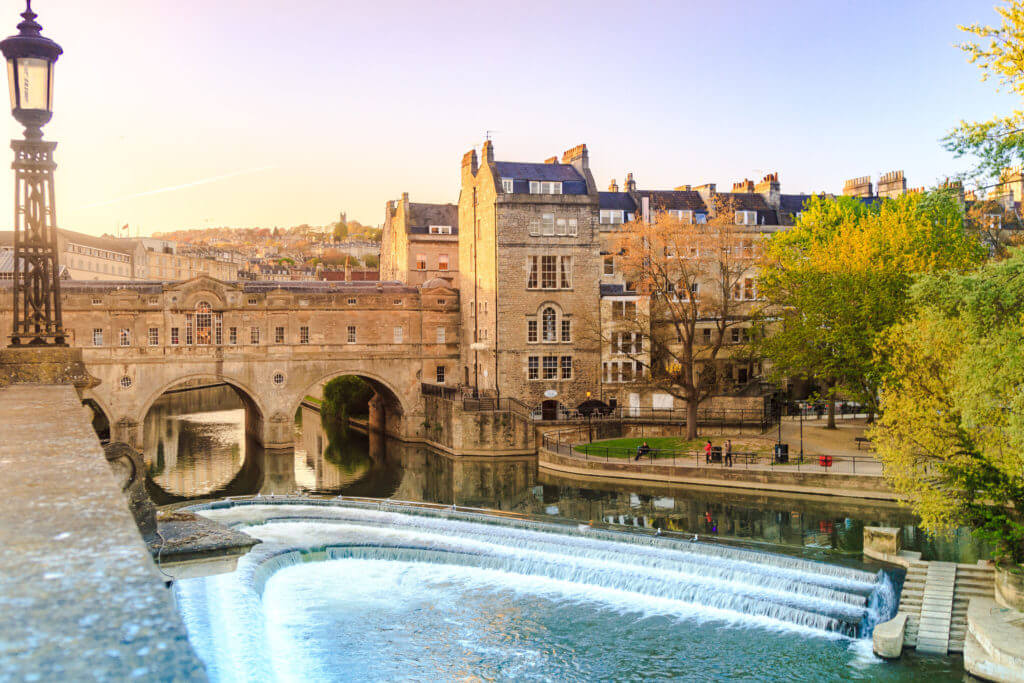
Because of the Roman remains present in Bath from the 18th century architecture, UNESCO awarded it World Heritage Site status.
Bath holds great significance in England, culturally and historically – the whole city is a heritage wonder. Some of the most famous attributes of this city are:
- Hot springs
- Roman archaeology
- 18th-century town planning
- 18th century architecture
- Social setting
UNESCO added this city to its World Heritage list almost three decades ago – Bath is an absolute must visit in England. Check out our full guide to a day in Bath here.
READ MORE on DAYS OUT IN ENGLAND
- The Best Mazes in England
- How to Enjoy England from the Inside
- See how high you can score on the BIG Yorkshire Quiz
5. Palace of Westminster and Westminster Abbey, London
The Palace of Westminster is also known as the Houses of Parliament. Built in the 19th century, the Palace of Westminster is a grand, gothic-style building where the House of Commons and the House of Lords meet. These are the two houses of the Parliament of the United Kingdom.
Just a short walk away Westminster Abbey is where many coronations and royal occasions are held. Many royal weddings have taken place in Westminster Abbey – Prince William got married to Kate Middleton here in 2011.
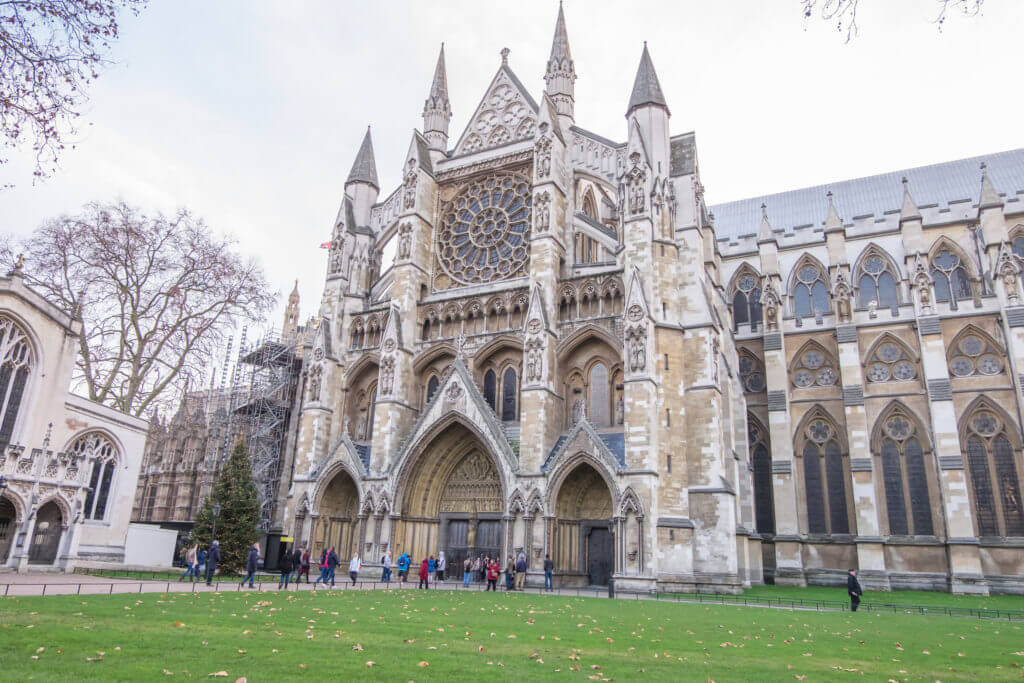
Many kings, queens, ad prime ministers have been buried in the Westminster Abbey and you can visit and see their gravestones and mausoleums.
On the east side of the palace, stands tall the world-famous Big Ben. Known as the Elizabeth Tower initially, Big Ben was constructed when the new palace was built. It was designed by Charles Barry and is one of the biggest tourist attractions in London. The neo-gothic style tower has a loud bell and its supposedly super accurate time makes it famous.
6. St. Paul’s Cathedral, London
England is full of cathedrals and churches that will swoosh you off your feet due to their beauty and opulence.
St. Paul’s Cathedral is one of the famous cathedrals in England, mainly due to the 1,200 years of history attached to it, and for the fact that many important events took place here. Most famously, Prince Charles and Princess Diana got married here in 1981.
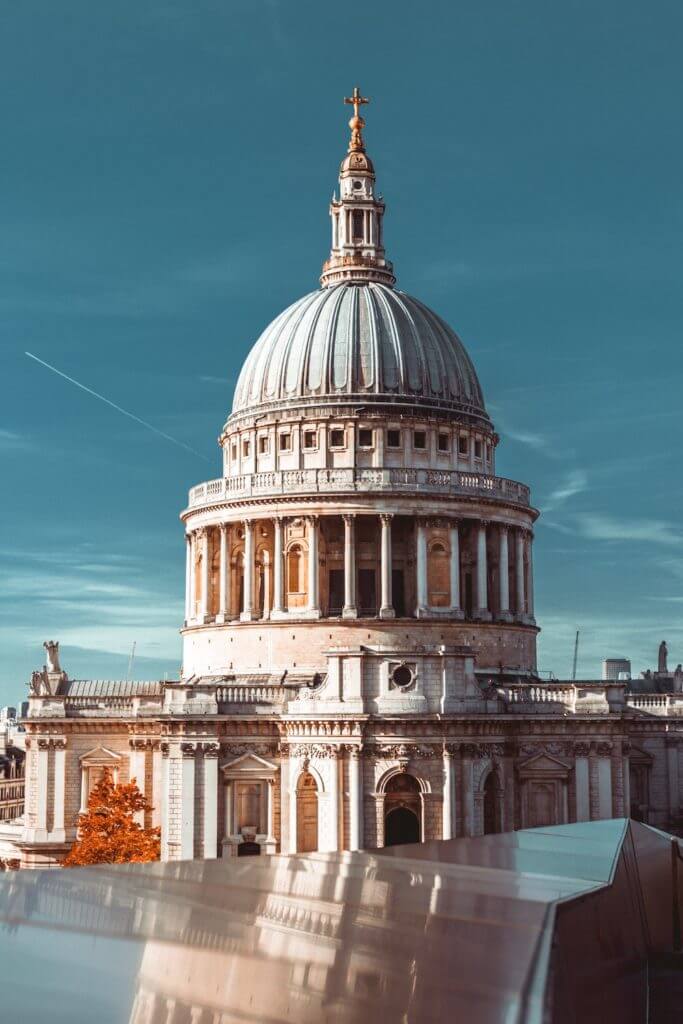
Almost 237 steps take you to the Dome of this World Heritage Site in England. Make it to the top and you can enjoy the awe-inspiring views of London’s skyline.
Check out the Whispering Gallery – famous for being able to hear a whisper from 100 feet away.
The interior of St Paul’s Cathedral is purely magnificent and you can soak up the splendour the moment you step through the door.
While you’re in the capital city, it’s worth exploring some of the famous streets of London too. Having these as your focal point for your London day out will give you a good look round the city.
7. Studley Royal Park and Ruins of Fountains Abbey, North Yorkshire
Studley Royal Park has some amazing sites which make it famous for being a UNESCO world heritage site. There are the vast late Elizabethan Fountains Halls, the Medieval Deer Park, and the Georgian Water Garden.
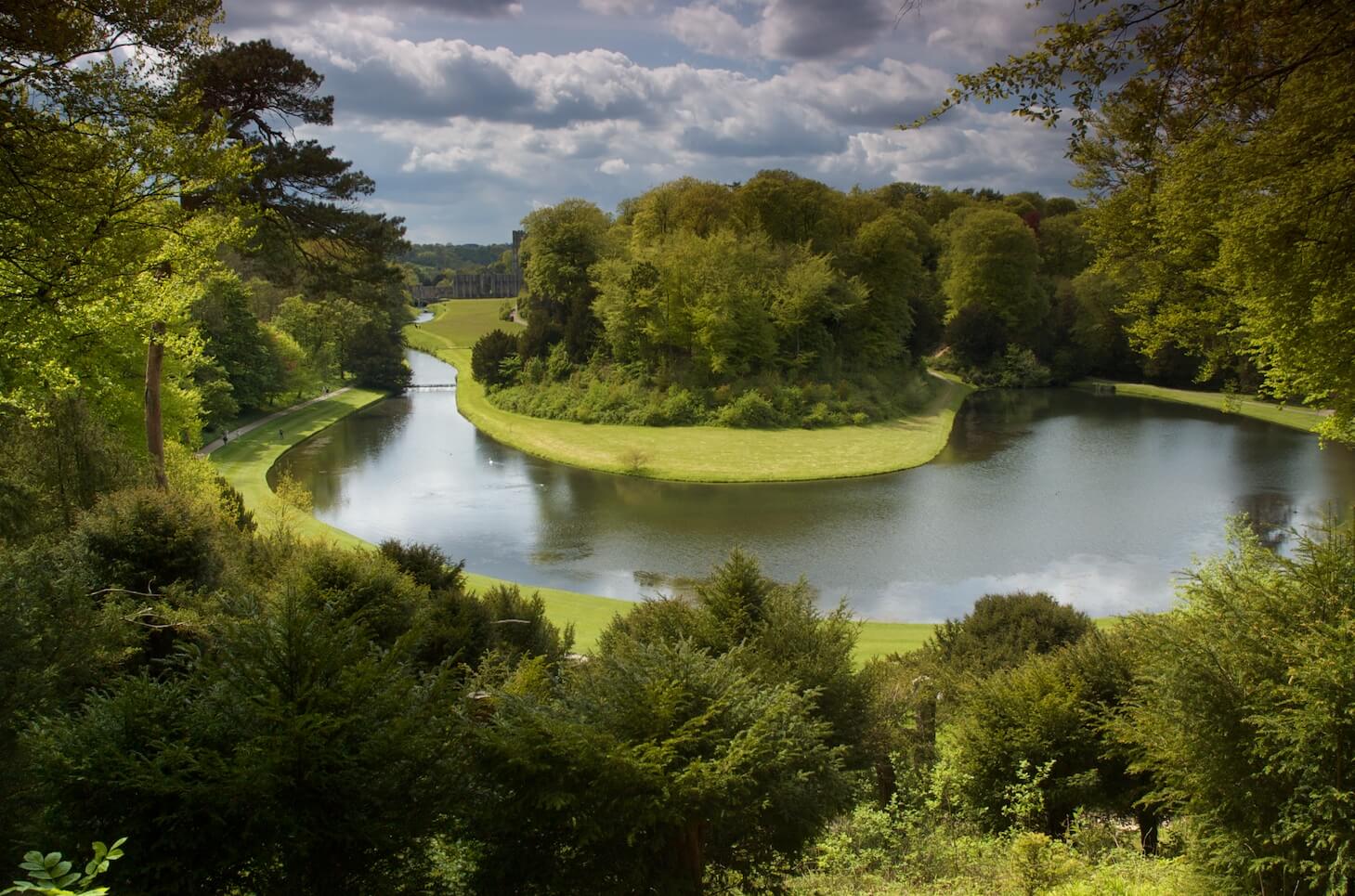
You’ll find ornamental lakes, temples, cascades, and canals within the park all with the aim to impress. All these sites make The Studley Royal Park a UNESCO World Heritage Site thanks to the cultural and architectural richness which is found there.
Another site which adds to the importance of Studley Royal Park is the vast ruins of the Fountains Abbey. This is one of the largest preserved ruins which have been conserved to keep its authenticity intact dating from 1132. The history attached to the Fountains Abbey starts when Henry VIII broke the Catholic Church in Roman.
During that process, many monastic foundations were formed and Fountains Abbey was one of them.
Visiting Studley Royal Park is one of the best days out in North Yorkshire there is.
8. Blenheim Palace, Oxford
Blenheim Palace is the largest stately home in England and is a UNESCO World Heritage Site in Oxfordshire.
The palace has a rich history; it is the only non-royal country house that has the word ‘palace’ along with it. Blenheim Palace was the reward to John Churchill for his military expertise against the battles with French.
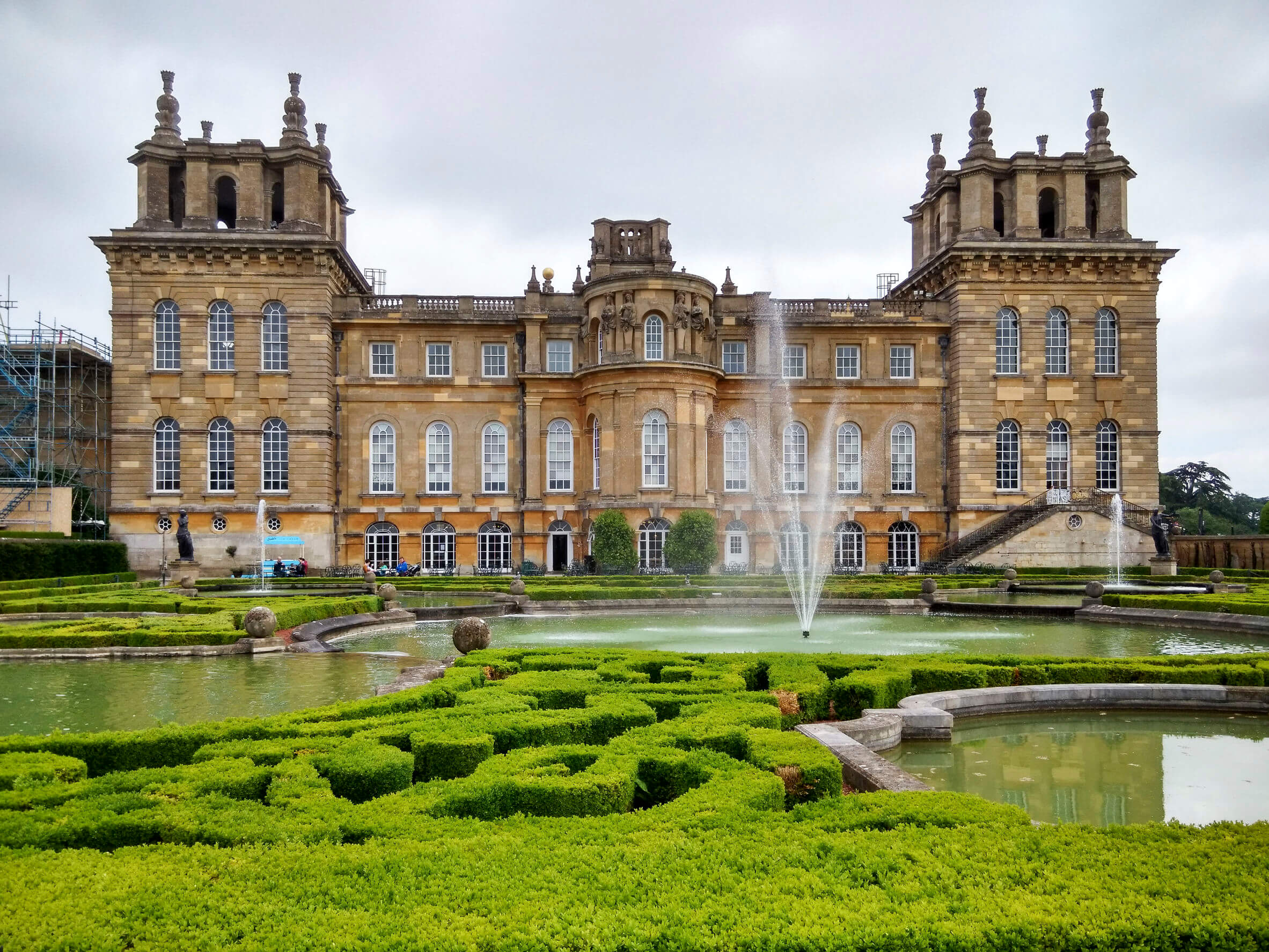
Visit and enjoy the ancient English baroque architecture. The building is also filled with marvellous paintings and sculptures. It is also surrounded by the garden that adds to the beauty of this palace.
Blenheim Palace is one of the most well known stately homes in England.
If you want to read more about Christmas at Blenheim Palace, click here for our editor’s review of her trip there in Christmas 2022.
9. The Jurassic Coast, Dorset
Take a step back in time along this 95 mile (153 m) coast in Dorset. The rock has been built up and torn down for 185 million years. The cliffs house fossils and amazing rock formations like Durdle Door and Old Harry Rocks – two of the most photographed views in England.
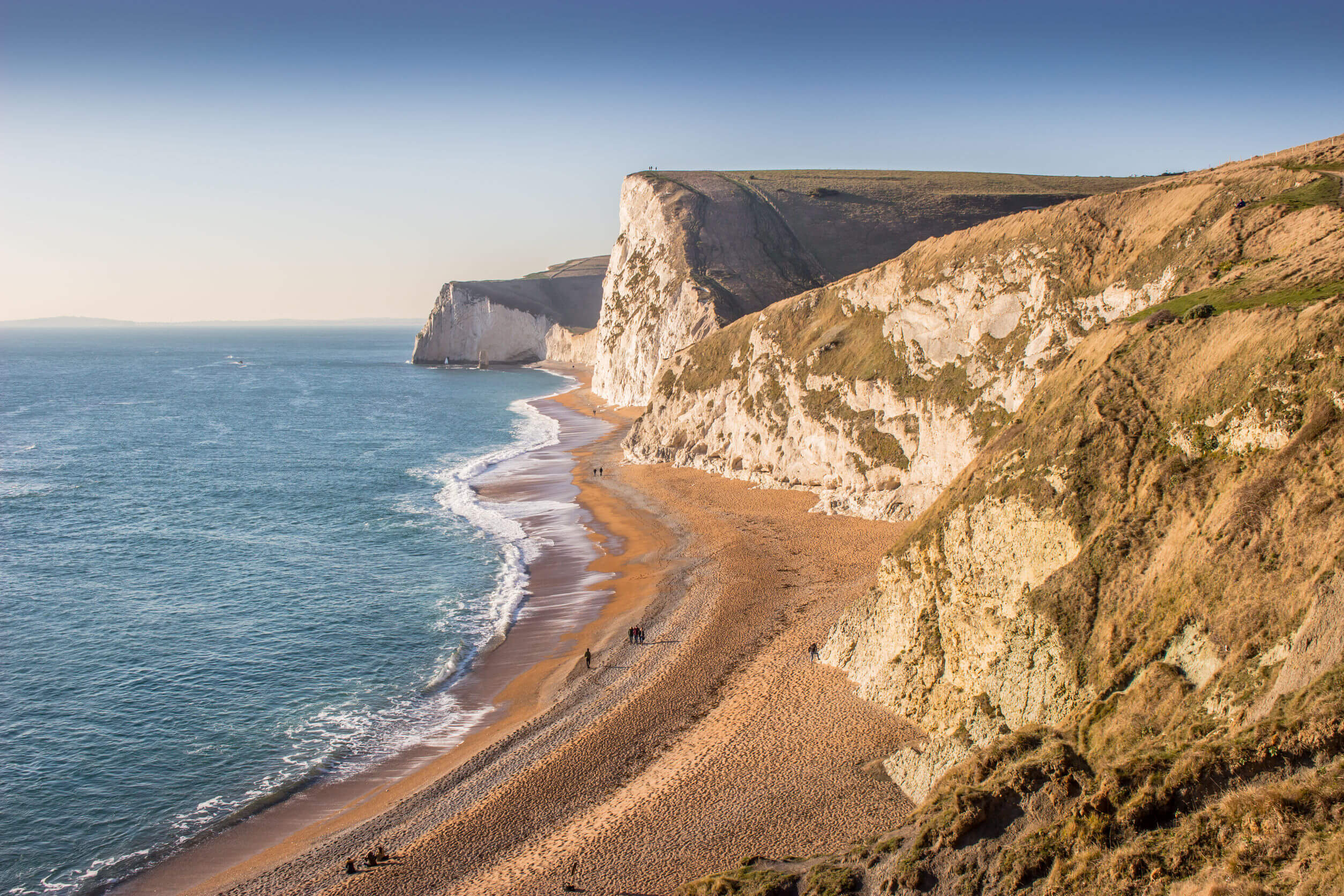
The Jurassic Coast is a popular part of England for domestic holidays, in fact Durdle Door beach gets packed come summer. There are some beautiful walks and less crowded beaches a little further along the coach.
The Jurassic Coast Road Drive is 18 miles of stunning road that makes up one of the best England road trips – definitely recommend!
10. Ironbridge Gorge, Shropshire
Ironbridge Gorge is one of the most underrated UNESCO Sites in England. This impressive area is known as the birthplace of the Industrial Revolution in and around 1760.
Nowadays most of the factories are long gone and the natural beauty of the deep Gorge is here to be enjoyed on foot.
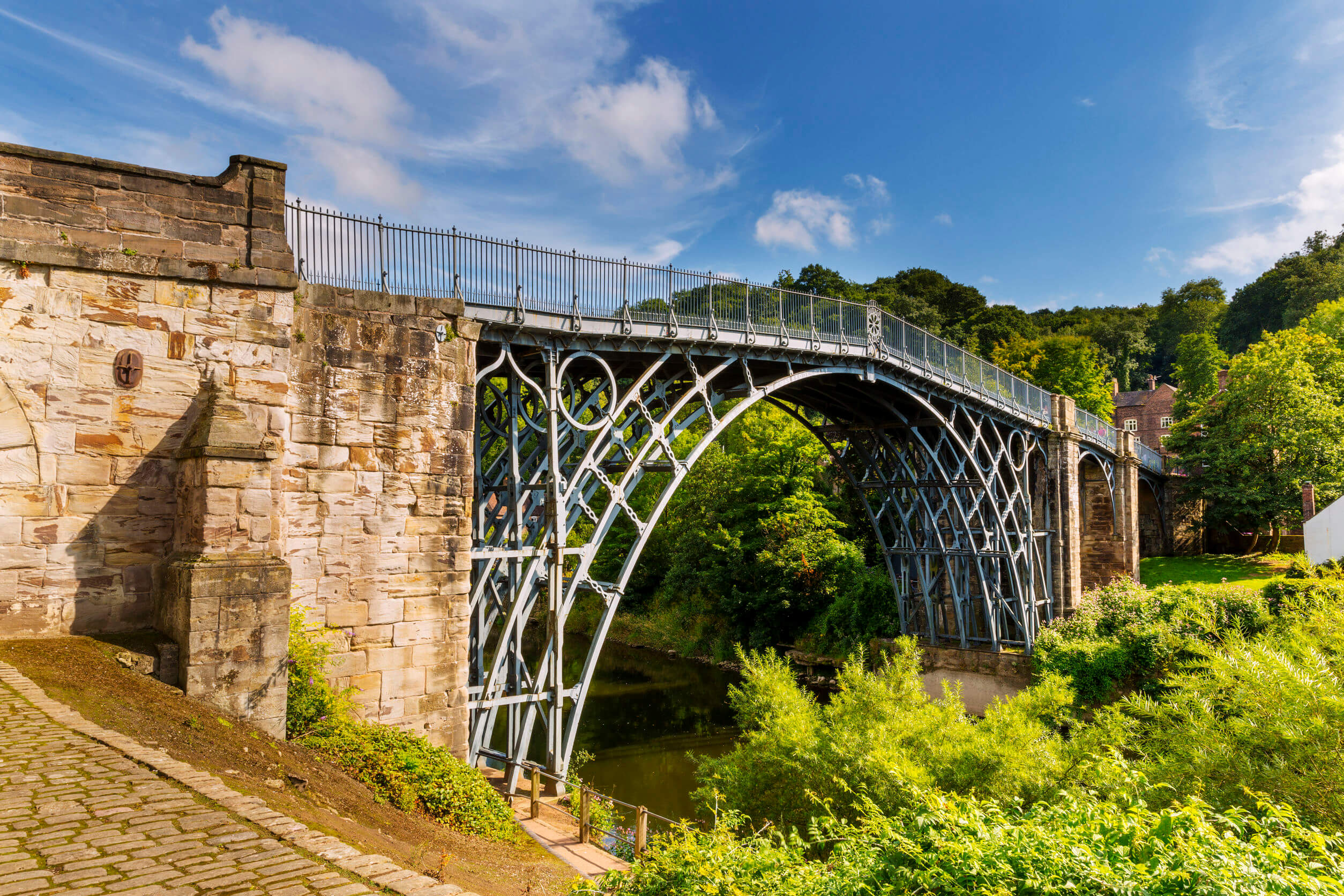
“Originally called the Severn Gorge, the gorge now takes its name from its famous Iron Bridge, the first iron bridge of its kind in the world, and a monument to the industry that began there. The bridge was built in 1779.”
– IRONBRIDGE GORGE
As one of the most important UNESCO World Heritage Sites in England Ironbridge Gorge has some superb Victorian themed museums operated by the Ironbridge Gorge Museum Trust. They’re there to give information and advice on the Gorge and it’s fascinating history.
Bring your bikes and your walking boots because as well as the museums, Ironbridge Gorge is now home to a maze of footpaths, bridleways and country lanes. Pretty hamlets and streets await on this great day out in Shropshire!
11. Derwent Valley Mills, Derbyshire
As one of England’s top UNESCO World Heritage Sites, Derwent Valley Mills is an iconic day out in Derbyshire – giving great insight into the history of industry in the area. Now you can enjoy the shops there, and a wander around the grounds.
There are information boards to help you understand the area better, and it’s place in Derbyshire and England in general.
“The Derwent Valley in central England contains a series of 18th- and 19th- century cotton mills and an industrial landscape of high historical and technological interest. The modern factory owes its origins to the mills at Cromford, where Richard Arkwright’s inventions were first put into industrial-scale production.
– UNESCO
The workers’ housing associated with this and the other mills remains intact and illustrate the socio-economic development of the area.”
12. Saltaire, West Yorkshire
Ok, next UNESCO World Heritage Sites in the UK is Saltaire.
A visit to Saltaire makes for a lovely day out in West Yorkshire, near Bradford. Come here and you’ll get a fascinating insight into England’s history, and just a nice day out in an industrial village too.
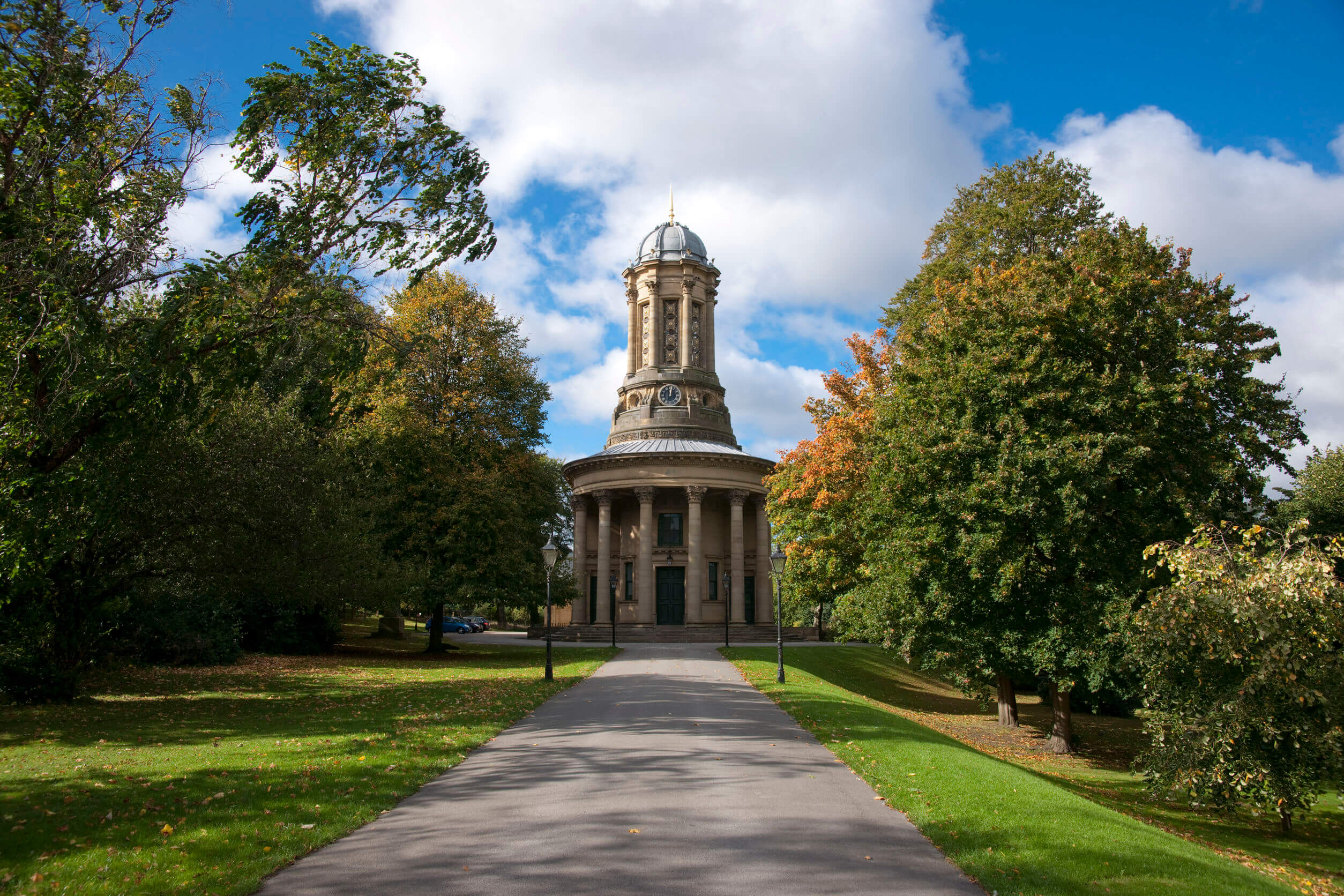
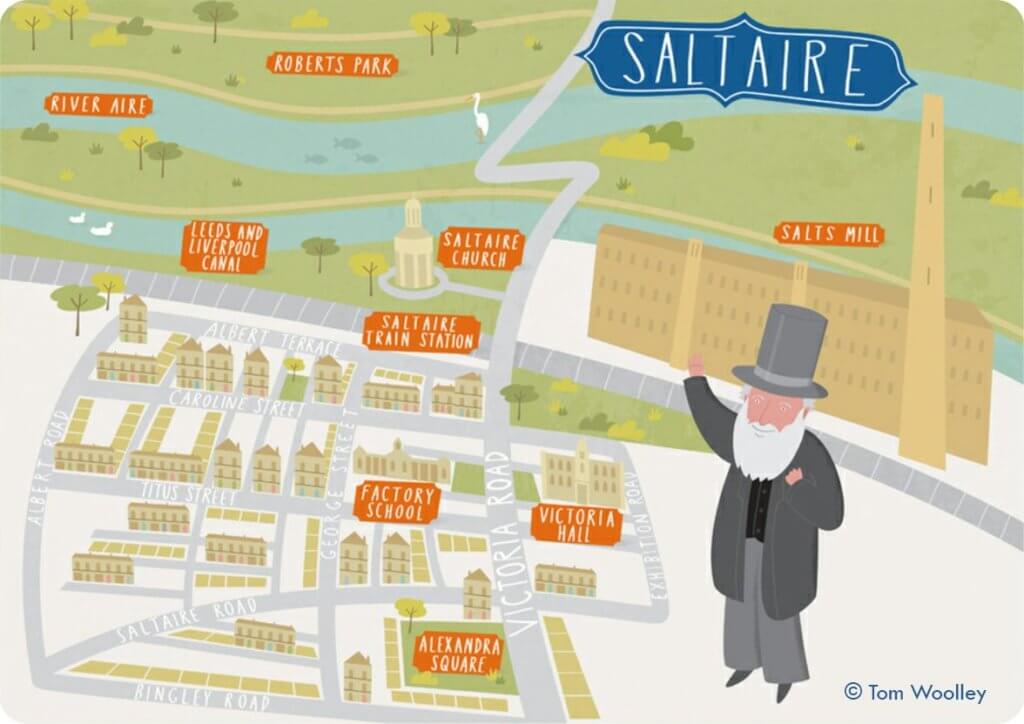
“Saltaire Village is named after Sir Titus Salt who built a textile mill, known as Salts Mill and this village on the River Aire. Designed by architects, Lockwood and Mawson, Saltaire has beautiful Italianate architecture and a rich history. Saltaire Village was designated a World Heritage Site by UNESCO in 2001.
– saltairevillage.info
Saltaire is a village where people live. You don’t have to book to come here and Salts Mill is free to enter. There are shops, places to eat, wonderful architecture and a lovely park.“
14. Maritime Greenwich, London
Maritime Greenwich is one of five World Heritage Sites in London. The Maritime Greenwich World Heritage Site is a lovely day out, and one I’ve enjoyed many times.
Not only are you right at the heart of one of the best areas in London, you’re also at the centre of the world, in terms of time anyway. This is where the Greenwich Mean Time line is measured from, and from where the whole world measures their time from. You can actually stand on the line, which is pretty cool.
That’s not actually the UNESCO bit though.
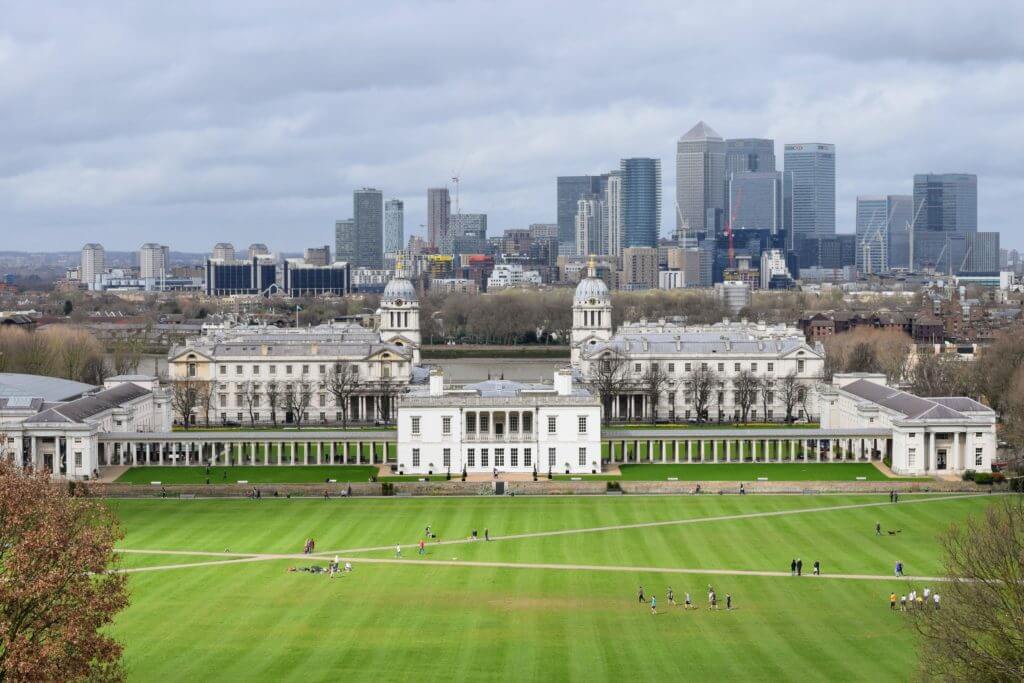
“Situated within central Greenwich and Greenwich Park, Maritime Greenwich includes a number of historic buildings representing its maritime importance. The unique architecture, designed landscape and association with the British monarchy over the centuries are just some of the features which make Maritime Greenwich a unique and significant place.”
– Greenwichworldheritage.org
The importance of Maritime Greenwich comes from its royal connections, in particular the British Tudor and Stuart dynasties. Maritime Greenwich is one of the most important heritage sites in England thanks to its development from the 17th century as a site of astronomical research related to navigation, and of Royal Naval welfare and education.
You can book a day pass for the whole Greenwich Maritime area which gives you the freedom to explore the grounds. This is a great way to encourage you to see everything on offer.
Greenwich is one of the most popular settings for films set in England.
14. Canterbury Cathedral, St Augustine’s Abbey, and St Martin’s Church, Kent
For a classic day out in Kent, Canterbury Cathedral is a World Heritage Site you can wander in for hours. Blanketed with over 1400 years of history, the Gothic cathedral is the mother quarters of the Church of England.
While a fire had ravaged this ancient structure in 1174, the cavernous altar and crypt have preserved stunning pillars with intricate carvings.
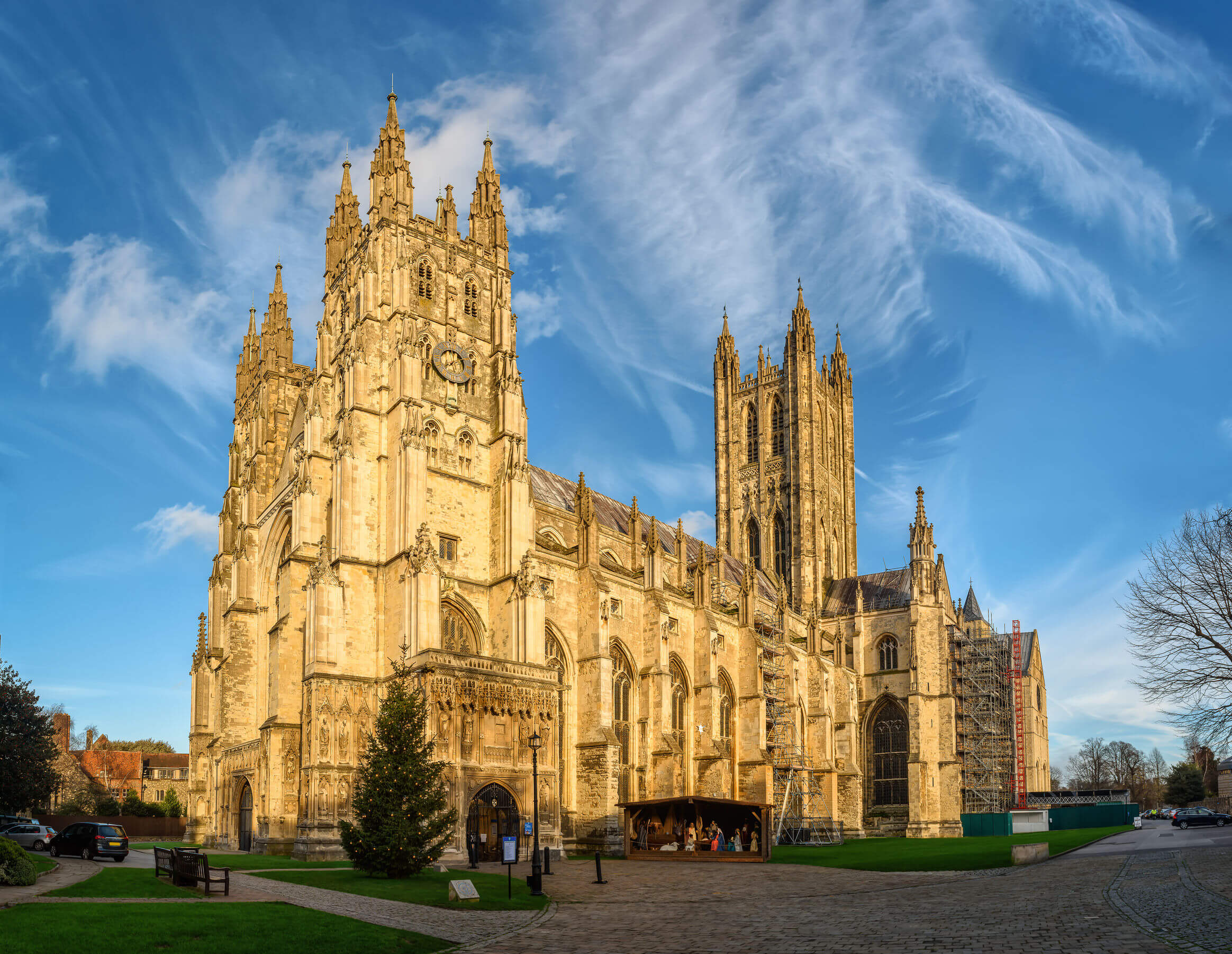
The main takeaway however, despite the gorgeous architectural details, is the overwhelmingly violent histories embedded in its walls. For one, the well-known murder of Archbishop Thomas Becket took place here; it also hosts the grave of warmonger Edward the Black Prince. To hear more enthralling stories, join a one-hour tour on your day out in Kent.
15. Cornwall and West Devon Mining Landscape
The Cornwall and West Devon Mining Landscape is often not quite registered by the millions of tourists who visit Devon and Cornwall every year. The beaches are so good here, it’s easy to overlook the historical importance of this area.
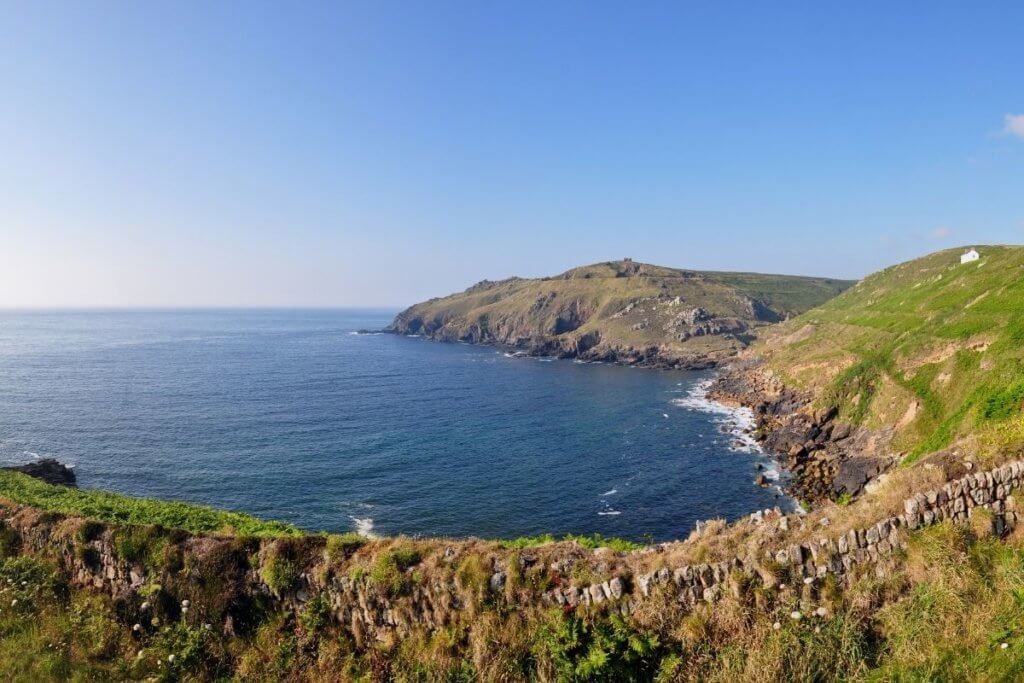
As one of only 21 World Heritage Sites in England though, you know it’s important. The ‘landscape’ is hard to pinpoint for visitors to the area, so ten unique areas have been designated to have particular importance.
- St Just – Mining on the edge of the earth
- Hayle – Global mining port with natural wonders
- Tregonning and Gwinear – Diverse landscapes and great houses
- Wendron – Tranquil rural area famed for tin-streaming
- Camborne and Redruth – The capital of Cornish Mining
- Gwennap – Great cycle trails through the Copper Kingdom
- St Agnes – Iconic cliff-top engine houses and world-class tin
- Luxulyan Valley and Charlestown – The creations of two extraordinary industrialists
- Caradon – Boom to bust mining amongst rugged moorland
- Tamar Valley and Tavistock – Nature and history entwined
“Discover the ten special places representing Cornish Mining that have created the largest World Heritage Site in the UK. With over 20,000 hectares spread across Cornwall and west Devon, the Site contains over 200 iconic Cornish engine houses and offers myriad experiences to explore this world-changing mining culture.“
– VISIT CORNWALL
16. Durham Castle and Cathedral, County Durham
Durham Castle is one of the UK’s World Heritage Sites in the north. Located unsurprisingly in County Durham, Durham Castle and Cathedral are a must visit.
The Cathedral was built in 1093 onwards, and since then has been known as the Cathedral Church of Christ, Blessed Mary the Virgin and St Cuthbert of Durham, or Durham Cathedral for short. It’s one of the finest examples of Norman architecture in Europe.
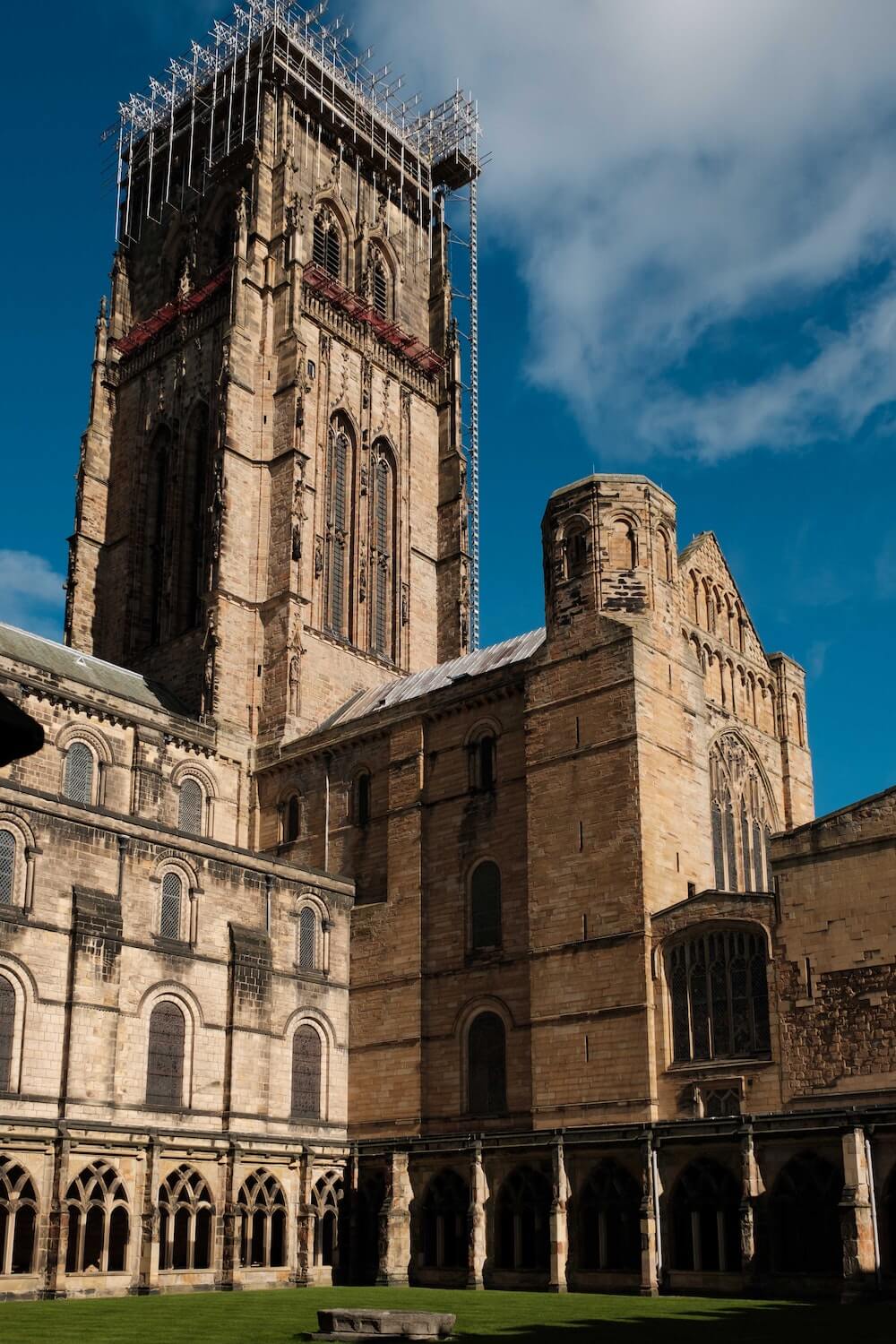
You can get two English World Heritage Sites for one in Durham. As well as Durham Cathedral, you also have Durham Castle, built 900 years ago to protect the English borders, and now part of Durham University.
Durham Castle was built to the orders of William the Conqueror on his return from Scotland in 1072, and has been occupied continuously since then. Of course it has a whole wealth of fascinating history and had been used as a backdrop to many films, but most recently it was famously in the Harry Potter series as a top filming location.
17. Hadrian’s Wall, Northumberland
Hadrian’s Wall is another stunning UNESCO World Heritage Site in England. It stretches across 73 miles from Wallsend to Bowness-on-Solway, in Cumbria. Hadrian’s Wall was built in the 120’s AD and was the most important monument built by the Romans.
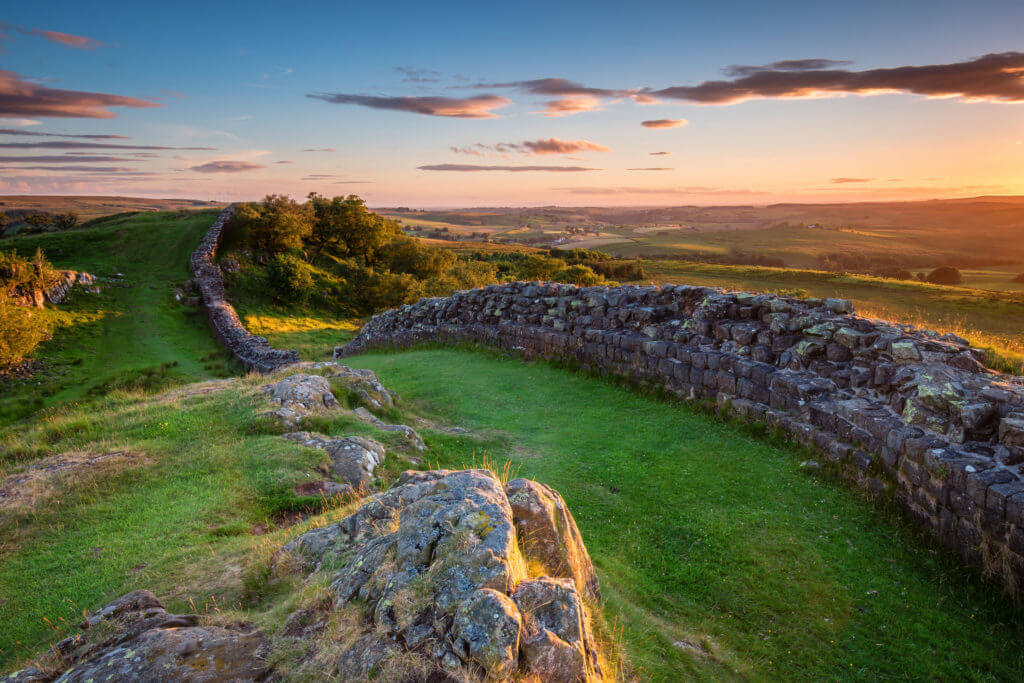
Hadrian’s Wall isn’t just a staple of British history; it’s a significant statement of world history. This historic wall is the border between England and Scotland and tells a long history of battle, struggle, and unity between the two nations. It runs 73 miles from east coast to west.
You can walk along it over a few days, or, you can go for a day out in Cumbria and just wander along a section to soak up the fascinating history.
18. Jodrell Bank Observatory, Macclesfield, Greater Manchester
Jodrell Bank Observatory is one of the most interesting UK World Heritage Sites. As well as a fascinating history, it continues to serve England into the future, and beyond.
“Located in a rural area of northwest England, free from radio interference, Jodrell Bank is one of the world’s leading radio astronomy observatories. At the beginning of its use, in 1945, the property housed research on cosmic rays detected by radar echoes. This observatory, which is still in operation, includes several radio telescopes and working buildings, including engineering sheds and the Control Building.
– UNESCO
Jodrell Bank has had substantial scientific impact in fields such as the study of meteors and the moon, the discovery of quasars, quantum optics, and the tracking of spacecraft. This exceptional technological ensemble illustrates the transition from traditional optical astronomy to radio astronomy (1940s to 1960s), which led to radical changes in the understanding of the universe.“
Visitors to Jodrell Bank Observatory today can wander the 35 acres of outside entertainment and take part in the following…
- See the Grade I listed Lovell Telescope
- Explore the Telescope pathway
- Join a Telescope Talk
- Explore the Jodrell Bank Arboretum
- Discover a range of outdoor exhibits including the popular whispering dishes
- Use the children’s playground
- Experience an Orrery demonstration
- Discover more about Jodrell Bank’s UNESCO World Heritage Site status
- Visit the Café and the new pop up Gift Shop
- Find out more about our new First Light Pavilion and view the building’s progress.
READ MORE: The Best Arboretums in England
19. Liverpool – Maritime Mercantile City
Along with Bath, Liverpool is one of two UK World Heritage Sites that are actually cities. Liverpool is one of the coolest cities in the UK – that cannot be disputed. It gave us The Beatles, Liverpool FC and is home to the beautiful Albert Dock.
The reason why it makes it onto the England UNESCO list though, is because of the city’s important role in the growth of the British Empire. Liverpool was also a pioneer in the development of modern dock technology, transport systems and port management, and building construction worldwide.
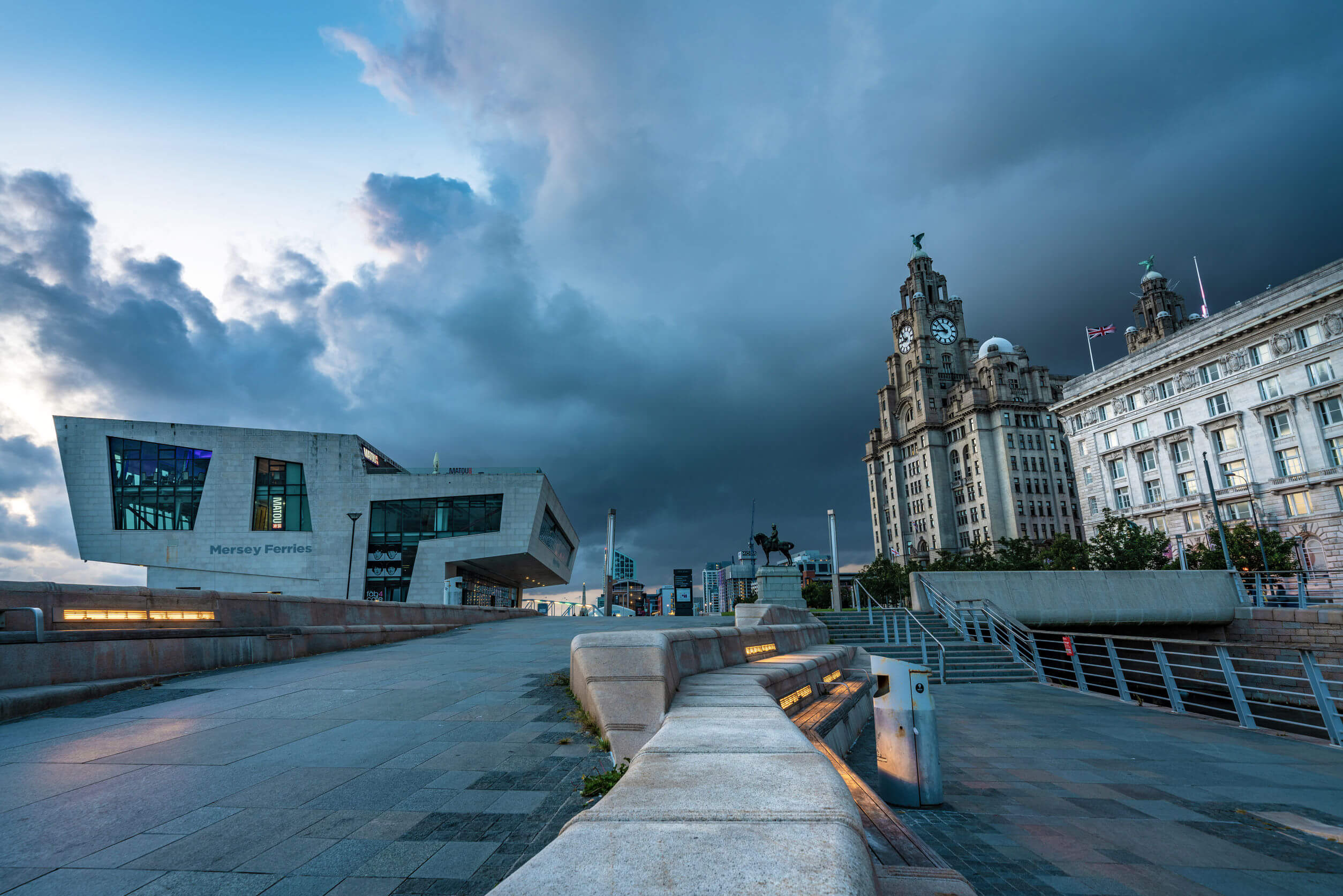
Visit today and you can enjoy bus tours, Beatles tours, lots of great food and drink, a vibrant town centre and some great shops and museums too. Liverpool makes for a great day out in Merseyside, but if you have the chance, I’d stay for at least two. The nightlife here is awesome!
20. Royal Botanic Gardens Kew, Greater London
The Royal Botanic Gardens, Kew or Kew Gardens, all refers to the same place – the 121-acre park with gardens and greenhouses, located in Surrey. The gardens are world famous and attract as many as 2,000,000 visitors per year – definitely one of the most popular days out in Surrey, and even England.
The Kew organisation owns the world’s largest collection of live plants with more than 30,000 species and a library with 750,000 works and 175,000 prints of trees and plants.

The history of Kew Gardens begins with an exotic garden surrounding the park around Kew Palace, in the first half of the eighteenth century. It was Queen Victoria who donated the park and its gardens to the people and thus made it accessible to the public. Over the years, the park has been expanded repeatedly.
Between 1844 and 1848, the famous Palm House, a greenhouse for palm trees, was built. The Waterlily House was opened in 1853, specifically to house the Victoria Amazonica, the largest water lily species. The Temperate House was built between 1860 and 1898. In 1987, the Princess of Wales Conservatory was opened by Princess Diana and the Treetop Walkway was opened in 2008.
Kew Gardens is an amazing place to visit in Surrey at any time of year, but at Christmas it’s particularly special. See if you can get a ticket booked ASAP for one of the all time best things to do in Surrey!
21. Lake District, Cumbria
There are so many incredible things to do in the Lake District, and stunning vistas, it’s hardly surprising it’s one of the best UNESCO World Heritage Sites in England.
Visit the Lake District and you can delve into the life of Beatrix Potter, get out on Lake Windermere, take a peek at Rydal Mount or relax in one of England’s most beautiful villages, Grasmere.
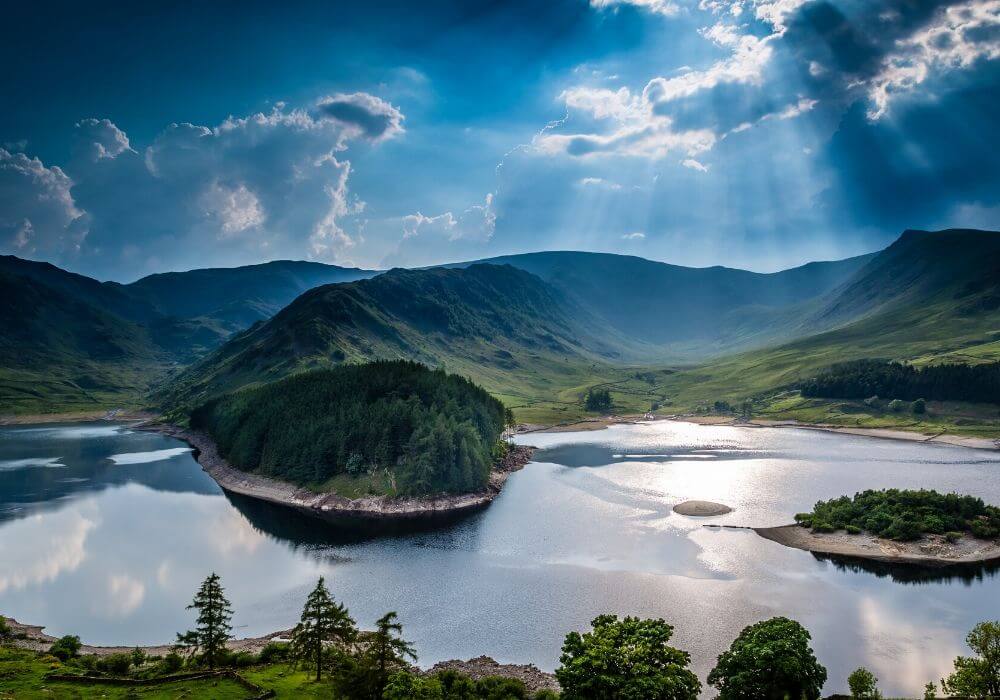
The Lake District’s most famous landmark is Scafell Pike – rising to 978 meters, the highest point in England is waiting for you!
If that sounds like far too much adventure in the Lake District for you, then go to the gorgeous Holker Hall and Gardens instead. Here you can enjoy the 25 acres of deer-inhabited parkland and manicured gardens before checking out the current residence of Lord and Lady Cavendish.
England’s UNESCO World Heritage Sites
England is not only famous for its fish and chips, tea and Wimbledon. The architecture and history here make it an important asset to the world.
The great rivers, small streams, its fertile land, and the many heritage sites it holds make it more significant in the world. These are just a few UNESCO World Heritage Sites but once you start learning about world heritage sites in England, you will come across many other places that have historical and cultural significance.

The architecture, the history, and the culture all work together in making a place a heritage. England is famous for its iconic landmarks and mind-blowing landscapes. You are sure to learn something when you are visiting England, let it be its history or its culture. Do visit these heritage sites while you stay in England, you will not only enrich your mind but your soul as well.
All the UNESCO World Heritage Sites in England
If you want the full list of UK UNESCO World Heritage Sites – to include Scotland, Wales and Northern Ireland – click the link.
- 1. Tower of London, London
- 2. Windsor Castle, Berkshire
- 3. Stonehenge, Wiltshire
- 4. The City of Bath, Somerset
- 5. Palace of Westminster and Westminster Abbey, London
- 6. St. Paul’s Cathedral, London
- 7. Studley Royal Park and Ruins of Fountains Abbey, North Yorkshire
- 8. Blenheim Palace, London
- 9. The Jurassic Coast, Dorset
- 10. Ironbridge Gorge, Shropshire
- 11. Derwent Valley Mills, Derbyshire
- 12. Saltaire, West Yorkshire
- 13. Greenwich, London
- 14. Canterbury Cathedral, Canterbury
- 15. Cornwall and West Devon Mining Landscape, Cornwall and Devon
- 16. Durham Castle and Cathedral, County Durham
- 17. Jodrell Bank Observatory, Greater Manchester
- 18. Liverpool – Maritime Mercantile City, Liverpool
- 19. Kew Gardens, London
- 20. Lake District, Cumbria
- 21. Hadrian’s Wall, Northumberland
PIN THESE UK World Heritage SITES FOR LATER

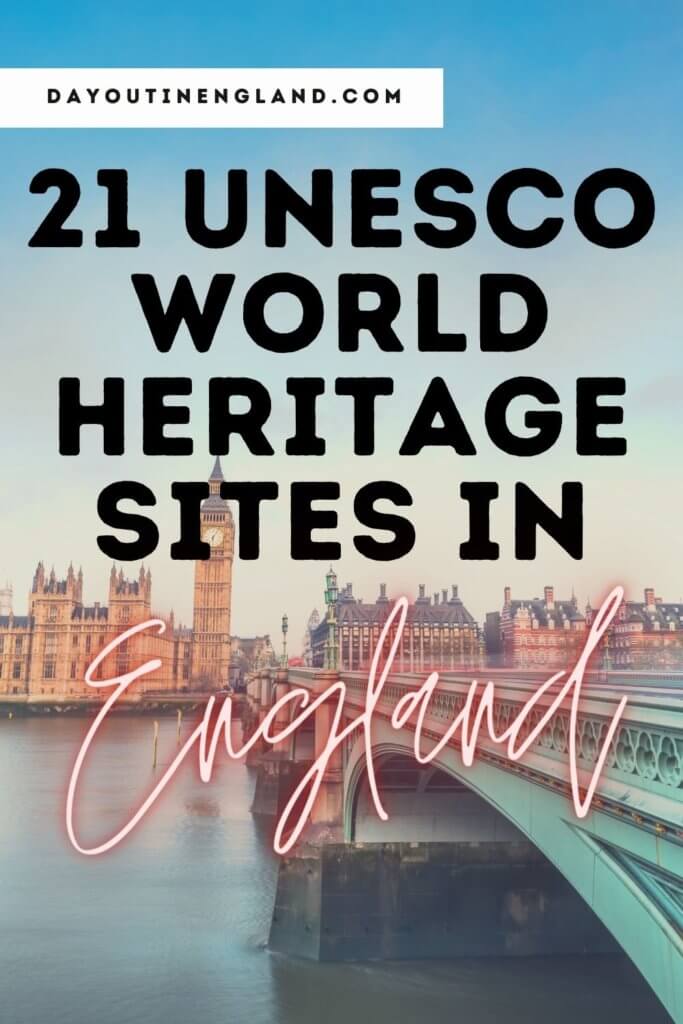
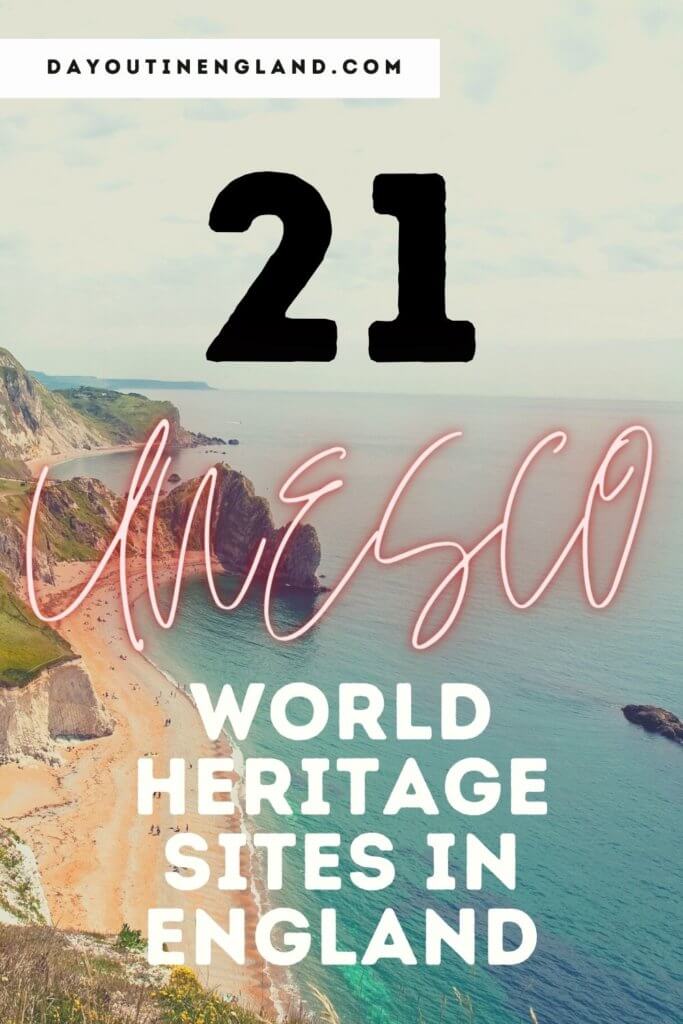
- Where to See the Best Christmas Lights in London (2025) - 15 October 2025
- 9 Best Pumpkin Patches in England for 2025: Where to Go Pumpkin Picking This Autumn - 14 October 2025
- 7 Christmas Markets in London You Should Definitely Visit - 7 October 2025

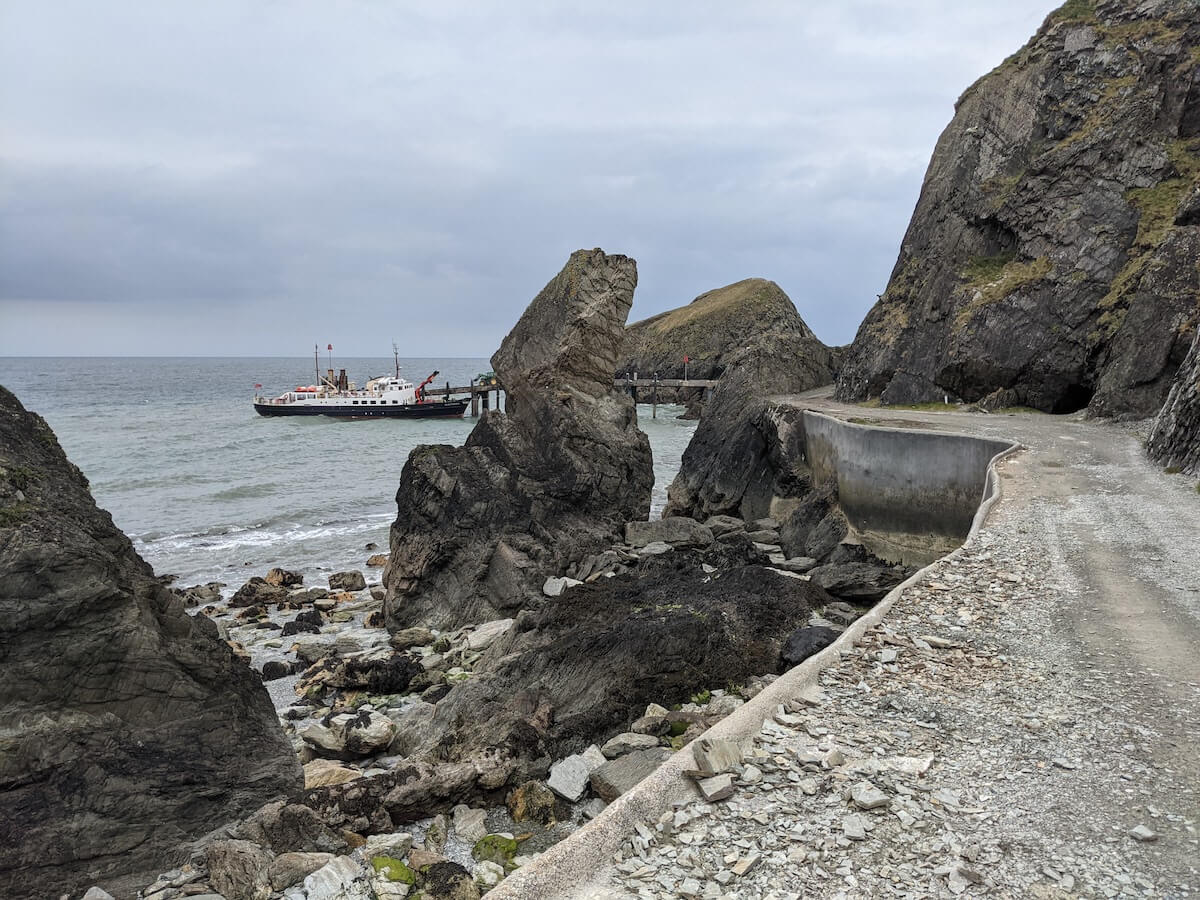





This website was… how do you say it? Relevant!! Finally I’ve found something which helped me. Appreciate it!